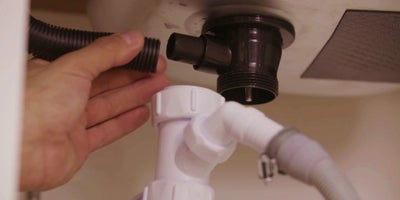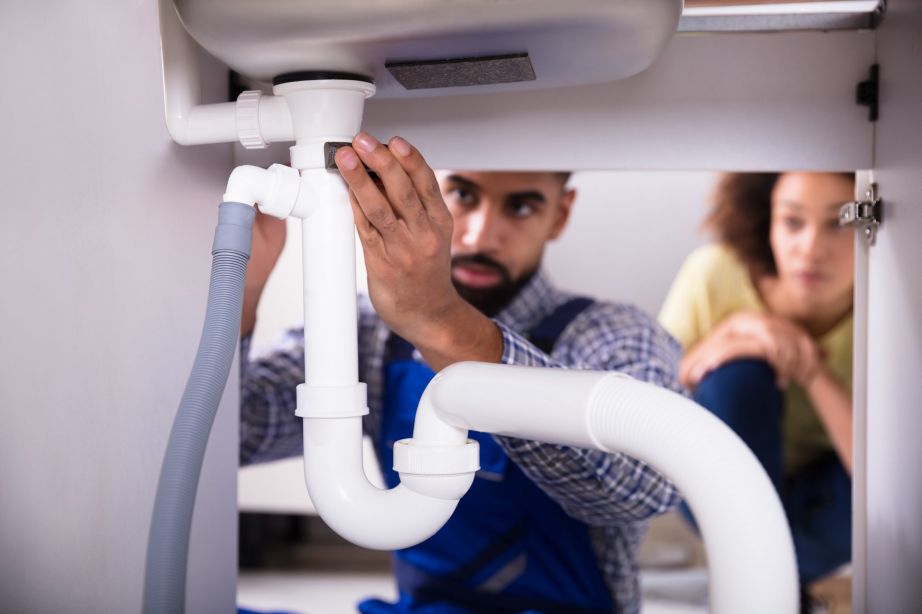Effective Techniques For Correcting A Slow-Draining Sink
Effective Techniques For Correcting A Slow-Draining Sink
Blog Article
What are your ideas about Solved! How to Fix a Slow Sink Drain?

Intro
We've all existed: You're brushing your teeth or cleaning your hands, and you observe the water merging in the sink. Rather than swiftly swirling down the tubes, it remains, turning your once-refreshing early morning regimen right into a small swamp scene. A slow-draining sink isn't just frustrating; it's typically an indicator of bigger plumbing problems lurking beneath the surface area. Fortunately is that many slow-draining sinks can be repaired with a little knowledge, a couple of fundamental tools, and some persistence. Ready to tackle this project head-on? Allow's roll up our sleeves and dive right in.
Understanding the Reasons For a Slow-Draining Sink
Prior to you start poking around in your pipes, it helps to understand what could be causing the downturn. Comprehending the origin makes it much easier to pick the right fix.
Common Perpetrators Behind Slow Drain
So, what's clogging things up? Usually, it's a blend of daily debris-- think hair, soap residue, tooth paste deposit, and leftover food particles. In time, these tiny bits collect and cling to the pipe walls, slowly narrowing the passage and making it harder for water to go through. Sometimes, natural resource from tough water can additionally include in the substance, creating the best storm for persistent blockages.
When is it Time to Act?
If you discover the water draining slower than normal, it's an excellent concept to step in sooner as opposed to later on. Waiting as well long could bring about complete blockages, undesirable odors, and even pipeline damage. If the water takes greater than a few secs to clear out after switching off the faucet, consider it a red flag and get ready to put on your DIY hat.
Devices and Products You'll Require
The right devices make all the difference. The good news is, you will not require a fully stocked plumbing technician's van to get the job done.
Essential Tools for Do It Yourself Repair Works
A plunger is your best beginning point. A small, sink-sized plunger develops suction that can displace small clogs. For more relentless obstructions, a drain snake (sometimes called a plumbing's auger) works marvels. A pair of gloves, a flashlight, and possibly a pair of safety goggles are also convenient.
Suggested Cleaning Solutions
Mild meal soap and hot water can assist break down greasy accumulation. A blend of baking soft drink and vinegar is a reliable natural remedy, and chemical cleansers provide a more environment-friendly method. Keep chemical drainpipe cleansers as a last resource, as they can be rough on your pipelines.
Security First: Safety Measures and Prep work
Prior to you launch into unclogging setting, think of safety. You're handling possibly filthy water and particles, so slip on a set of handwear covers. If you're making use of chemical cleaners, make certain the space is well-ventilated and adhere to the guidelines on the label.
Protective Equipment and Work Area Configuration
Put down some old towels or dustcloths around the sink area to catch sprinkles. Remove any kind of items that may enter your means, like soap dispensers or toothbrush owners. See to it you have good lights-- grab a flashlight if needed.
Step-by-Step Guide to Fixing a Slow-Draining Sink
Now, let's get into the nitty-gritty. This detailed procedure will direct you through straightforward methods to restore your sink's water drainage.
Action 1: Eliminate and Tidy the Stopper
Often, the stopper (that little plug you lower to block water) is the very first wrongdoer. Remove it thoroughly and wipe any hair or crud trapped around its base. Wash it extensively before putting it back in position.
Step 2: Use a Bettor to Displace Particles
Got that plunger prepared? Setting it over the drainpipe and give it a couple of firm pumps. The idea is to produce suction that can loosen up any type of obstruction. If you see little bits of particles drifting up, you get on the ideal track.
Step 3: Try a Drain Snake or Cord Wall Mount
If the plunger doesn't work, it's time to bring out the drainpipe snake. Gently feed it right into the drain and spin as you go. You may feel some resistance-- that's likely the obstruction. Keep twisting and pulling up until you eliminate the obstruction. If you don't have a drainpipe serpent, an aligned cord hanger can work in a pinch.
Step 4: Apply a DIY Drain Cleanser
An all-natural cleaner made from cooking soda and vinegar can break down recurring gunk. Put half a cup of baking soft drink into the drainpipe, complied with by half a cup of vinegar. Allow it fizz for around 15 mins, after that flush with hot water. This chain reaction usually does wonders for small obstructions.
Step 5: Reconstruct and Evaluate the Sink
Put every little thing back with each other and run the tap. Does the water now swirl down the tubes at a decent speed? If yes, give on your own a pat on the back. Otherwise, don't anguish-- there are still a few even more dress up your sleeve.
Alternate Methods for Stubborn Clogs
Not all blockages are produced equivalent. If your sink still rejects to coordinate, take into consideration these alternate solutions.
Sodium Bicarbonate and Vinegar Method
We currently touched on this, yet it's worth keeping in mind once more. This mild, environment-friendly approach is much safer than chemical cleansers and often quite efficient.
Enzymatic Drain Cleaners
Enzyme-based cleaners use natural bacteria to absorb organic matter. They're an outstanding selection if you're seeking to stay clear of severe chemicals. Simply bear in mind, they may take a bit longer to work their magic.
Chemical Drainpipe Cleaning Company: Pros and Cons
Chemical cleaners can blast through difficult blockages quick, yet they're not without downsides. They can create heat and fumes, damage pipelines if made use of exceedingly, and position ecological threats. Utilize them sparingly, and always adhere to the instructions very carefully.
Preventive Measures to Maintain Your Sink Flowing
Prevention is the very best cure. By adopting a few basic habits, you can keep your sink from reducing to begin with.
Normal Cleaning Behaviors
Clean down the sink container and component area regularly. Get rid of hair or food fragments before they have a chance to wash down the drainpipe.
Avoiding Unsafe Compounds Away
Think twice before discarding coffee grounds, grease, or coarse vegetable scraps down the sink. These culprits cling to pipe wall surfaces, developing clogs in time.
Routine Upkeep Checks
Arrange a fast regular monthly assessment. Run warm water via the sink for a couple of mins, taking notice of the flow. If it seems sluggish, act fast prior to it comes to be a full-on clog.
When to Call a Professional Plumbing Professional
Sometimes, regardless of just how hard you try, that clog simply will not budge. That's when it's time to bring in the pros.
Signs That Show a Much More Significant Problem
If your sink drains gradually in spite of multiple efforts, or if you observe water backing up in various other fixtures (like your shower or bathroom), you may have a much more major pipes issue hiding much deeper in the system.
Balancing Do It Yourself Efforts with Specialist Assistance
While DIY can conserve you money and provide a sense of success, there's no embarassment in calling a professional. A professional plumbing technician can examine your whole plumbing arrangement, ensuring there's no underlying damage or long-lasting issue that can cost you extra in the future.
Comparing Expenses and Long-Term Solutions
Before deciding, consider the big picture. An economical, quick fix could address the problem temporarily, but buying an extra irreversible option could conserve you cash and anxiety over time.
Weighing the Expenditures of DIY vs. Specialist Repairs
DIY repairs typically set you back little greater than the price of a bettor or a bottle of baking soft drink. Specialist services, on the other hand, included a price yet might prevent repetitive problems and pricey repair services later on.
Purchasing Top Quality Fixtures and Upgrades
If your sink's design adds to frequent clogs, it may be worth updating to higher-quality fixtures or altering the plumbing format. Consider this a financial investment in your house's functionality and comfort.
Conclusion
A slow-draining sink can seem like a small irritability, yet it's typically an indication that your plumbing needs a little tender loving care. By recognizing the origin, utilizing the right devices and techniques, and dedicating to straightforward preventive measures, you can maintain your sink streaming openly. And when all else falls short, never hesitate to employ a specialist-- your home's pipes is worth the investment in care and upkeep.
Three Common Ways to Fix a Slow Drain
Baking Soda Method
Boil a full pot of water. Measure out cup of baking soda and pour it down the drain. Then take cup of the magical cleansing substance known as white vinegar and drop that down there too. Allow the mixture to fizz in the drain for five minutes as the vinegar and baking soda combine. Now dump in that whole pot of boiling water. This combination of cleaning substances should clear out anything that is causing your sink to drain slowly. If it doesn t...
Zip-It
If the baking soda method doesn t clear out your drain, it may be because a significant amount of hair and/or other debris has collected there and you need to remove it. Purchase a Zip-It tool at any home improvement or hardware store and insert it into your drain. It will catch any collected hair or debris that s blocking the flow of water. Pull it out. If it s got a big clump of hair, etc. on the end, you ve probably got your culprit.
Drain Cleaner
If these methods don t work, there is the standard drain cleaner that you can also buy in a hardware store or even your local grocery store. It s better if you can use a household solution, but these drain cleaners often work in a pinch. They re very simple to use. You generally just dump them in your drain and wait. If even this method is not effective, it may be time to call the plumber.
https://www.mrrooter.com/oneida/about-us/blog/2017/july/three-common-ways-to-fix-a-slow-drain/

As a passionate person who reads on 4 Tips to Fix a Slow Draining Sink, I assumed sharing that segment was valuable. So long as you liked our blog post kindly do not forget to pass it around. Thanks so much for your time spent reading it.
Click Here Report this page